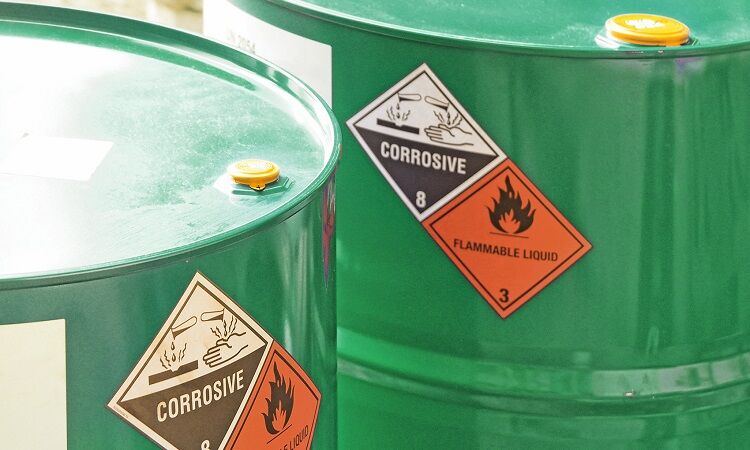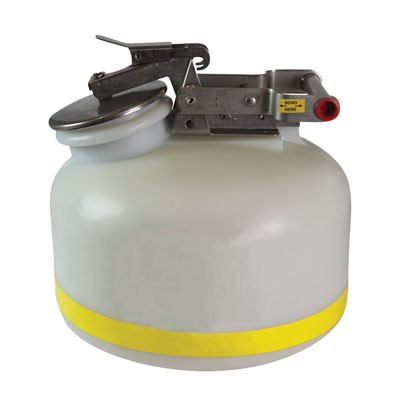Safe and Lasting Liquid Waste Disposal: Your Go-To Provider
Just How Fluid Waste Disposal Functions: An In-depth Introduction of Techniques and Technologies Utilized

Introduction of Liquid Waste Types
The complexity of fluid waste kinds requires a complete understanding of their qualities and ramifications for disposal. Fluid waste can generally be classified into several types, including industrial, community, agricultural, and contaminated materials. Each category exhibits distinct homes, needing details management methods to mitigate environmental and health and wellness threats.
Industrial liquid waste originates from producing procedures and typically has an array of pollutants, such as heavy metals, solvents, and natural compounds. Metropolitan fluid waste, mostly making up wastewater from households and commercial facilities, contains natural issue, nutrients, and microorganisms (industrial wastewater treatment). Agricultural liquid waste, including runoff from farms, may have fertilizers, pesticides, and pet waste, presenting threats to water quality and ecological communities
Hazardous fluid waste is defined by its poisoning, sensitivity, or possible to create harm. This group includes substances like acids, bases, and certain chemicals that require strict handling and disposal methods. Recognizing these diverse fluid waste kinds is important for creating efficient disposal approaches and ensuring compliance with environmental regulations. Appropriate category and characterization are important for implementing suitable treatment strategies and lessening the adverse effect on public wellness and the environment.
Physical Therapy Techniques

Testing is the first step, where bigger fragments and debris are eliminated from the fluid waste using displays or grates. This procedure secures downstream devices from damage and makes certain smoother operation. Adhering to testing, sedimentation utilizes gravitational force to separate solids from fluids. In sedimentation storage tanks, heavier bits work out at the base, creating a sludge layer, while the made clear liquid can be more treated.
Filtration is one more vital technique that entails passing the fluid through porous materials, such as sand or membrane layers, to catch smaller fragments. This action enhances the quality of the liquid, making it ideal for subsequent therapy procedures.

Chemical Treatment Techniques
Chemical treatment methods are necessary for effectively handling liquid waste, especially in dealing with liquified and colloidal impurities that physical approaches may not effectively eliminate. These strategies make use of various chemical agents to neutralize, precipitate, or change hazardous substances right into much less dangerous forms.
One common method is coagulation and flocculation, where chemicals such as alum or ferric chloride are included in promote the aggregation of suspended bits. This procedure boosts sedimentation, enabling much easier elimination of the resulting sludge. Additionally, oxidation processes, utilizing agents like chlorine or ozone, are utilized to break down complex natural substances and pathogens, providing the waste much safer for discharge or additional therapy.
Neutralization is one more crucial technique, which readjusts the pH of acidic or alkaline waste streams to neutral levels, protecting against possible injury to downstream systems and the atmosphere. Additionally, progressed oxidation processes (AOPs) make use of combinations of oxidants and ultraviolet light to weaken relentless contaminants, accomplishing a higher level of treatment effectiveness.
Biological Treatment Processes
Organic treatment procedures play a vital duty in the administration of liquid waste by making use of microbes to decay liquid waste disposal melbourne raw material and lower impurity degrees. These procedures can be generally classified into anaerobic and aerobic treatments, each using certain microbial communities to achieve effective waste degradation.
Cardiovascular treatment entails the use of oxygen to promote the break down of organic products by germs. This procedure is generally carried out in turned on sludge systems, where aeration storage tanks provide a favorable atmosphere for microbial development, bring about the oxidation of organic toxins. The resultant biomass can be separated from dealt with effluent with sedimentation.
In contrast, anaerobic treatment occurs in the lack of oxygen, counting on various bacteria to break down raw material. This approach is especially beneficial for high-strength waste, as it generates biogas, a renewable resource resource, while decreasing sludge production. Technologies such as anaerobic digesters are frequently employed in municipal and commercial applications.
Both anaerobic and aerobic biological treatments not only reduce the environmental influence of fluid waste however also facilitate source recuperation, making them vital parts of lasting waste monitoring techniques. Their effectiveness, adaptability, and effectiveness sustain their extensive execution throughout various markets.
Emerging Technologies in Disposal
Cutting-edge strategies to fluid waste disposal are rapidly advancing, driven by improvements in innovation and a raising focus on sustainability. Amongst these arising modern technologies, membrane layer bioreactors (MBRs) have acquired grip for their ability to combine organic treatment with membrane layer purification, causing top notch effluent that can be recycled in numerous applications. MBRs make it possible for smaller sized impacts and extra efficient operations compared to conventional systems.
Another appealing development is the use of anaerobic food digestion integrated with nutrient healing technologies, which not just deals with liquid waste but additionally produces biogas and recovers valuable nutrients like nitrogen and phosphorus. This twin benefit improves resource performance and minimizes environmental influence.
Additionally, progressed oxidation procedures (AOPs) are being taken on for the degradation of complicated organic contaminants. These techniques utilize effective oxidants and drivers to damage down contaminants at the molecular degree, supplying a very effective remedy for tough waste streams.
Additionally, the combination of directory expert system and artificial intelligence in waste monitoring systems is enhancing functional performance and anticipating maintenance, resulting in lowered costs and enhanced ecological conformity. These technologies reflect a significant shift in the direction of even more reliable and lasting liquid garbage disposal techniques.
Conclusion
To conclude, effective liquid waste disposal necessitates a detailed understanding of various methods and technologies. The integration visit this web-site of physical, chemical, and biological treatment techniques makes certain the effective monitoring of varied waste kinds. Moreover, the emergence of ingenious modern technologies boosts treatment efficiency and promotes sustainability in waste monitoring methods. By continually progressing these techniques, it comes to be feasible to deal with the expanding obstacles connected with liquid waste, eventually contributing to ecological security and resource recuperation.
Fluid waste disposal is a critical element of ecological management, needing an extensive understanding of different methods and innovations customized to different waste kinds. Liquid waste can broadly be categorized right into numerous types, consisting of industrial, community, farming, and unsafe waste. Agricultural liquid waste, consisting of runoff from ranches, may consist of fertilizers, chemicals, and animal waste, positioning risks to water quality and communities.
Numerous physical treatment techniques play a critical duty in handling liquid waste properly - industrial wastewater treatment.In final thought, reliable liquid waste disposal demands an extensive understanding of different techniques and technologies